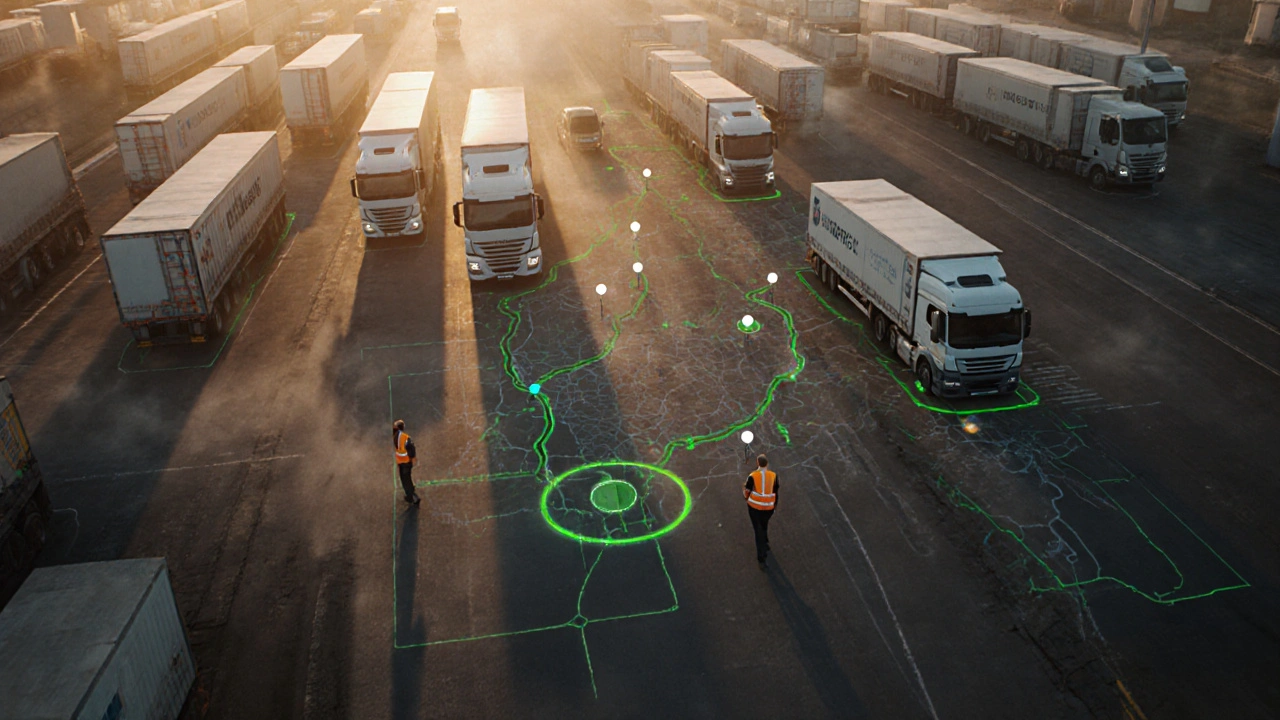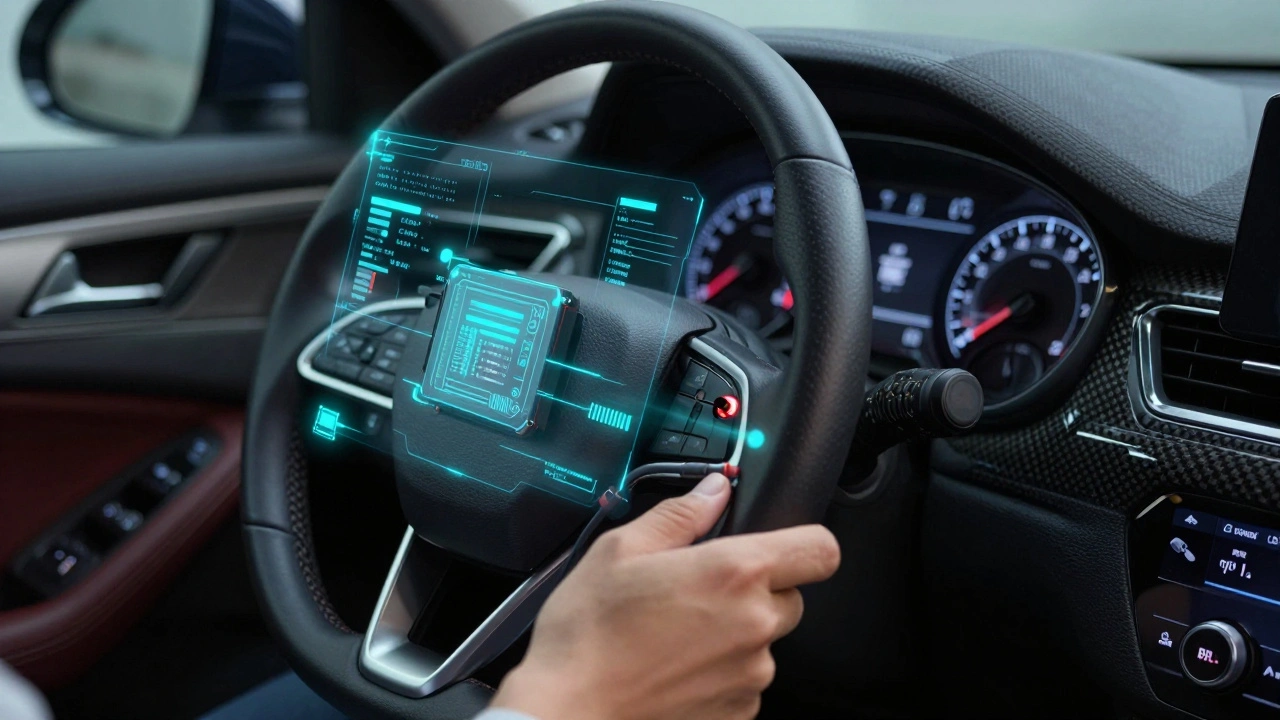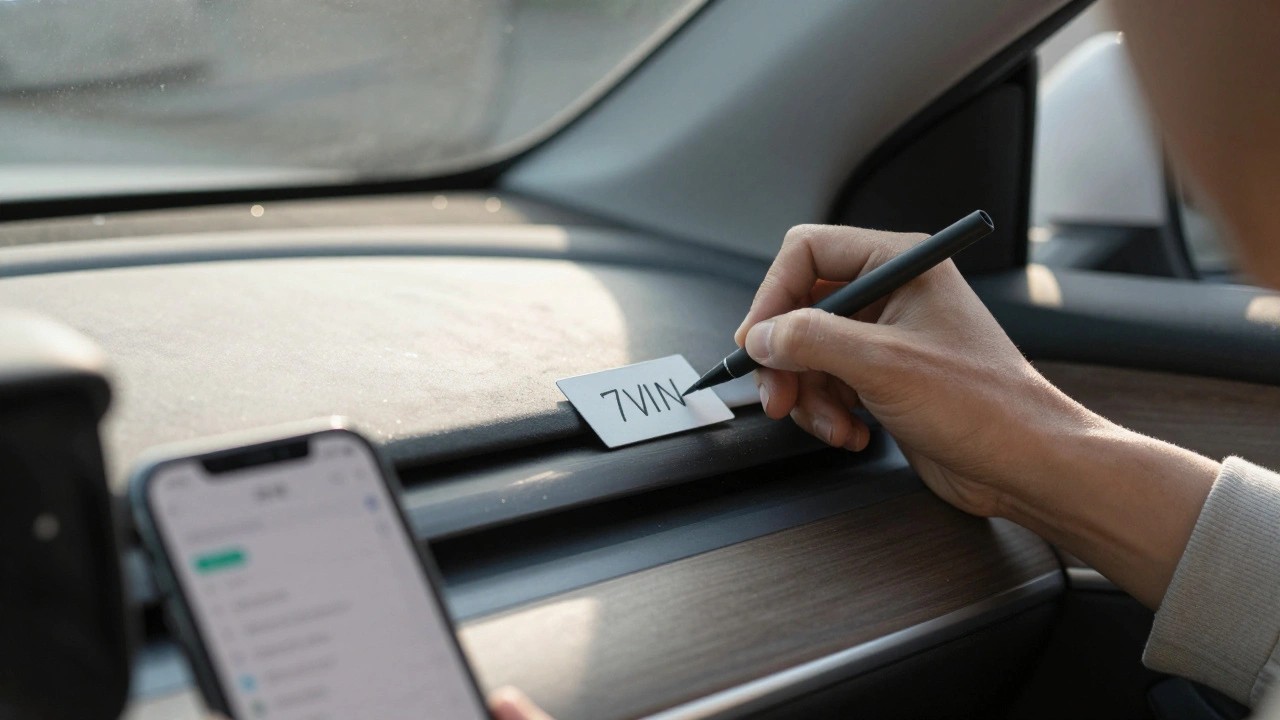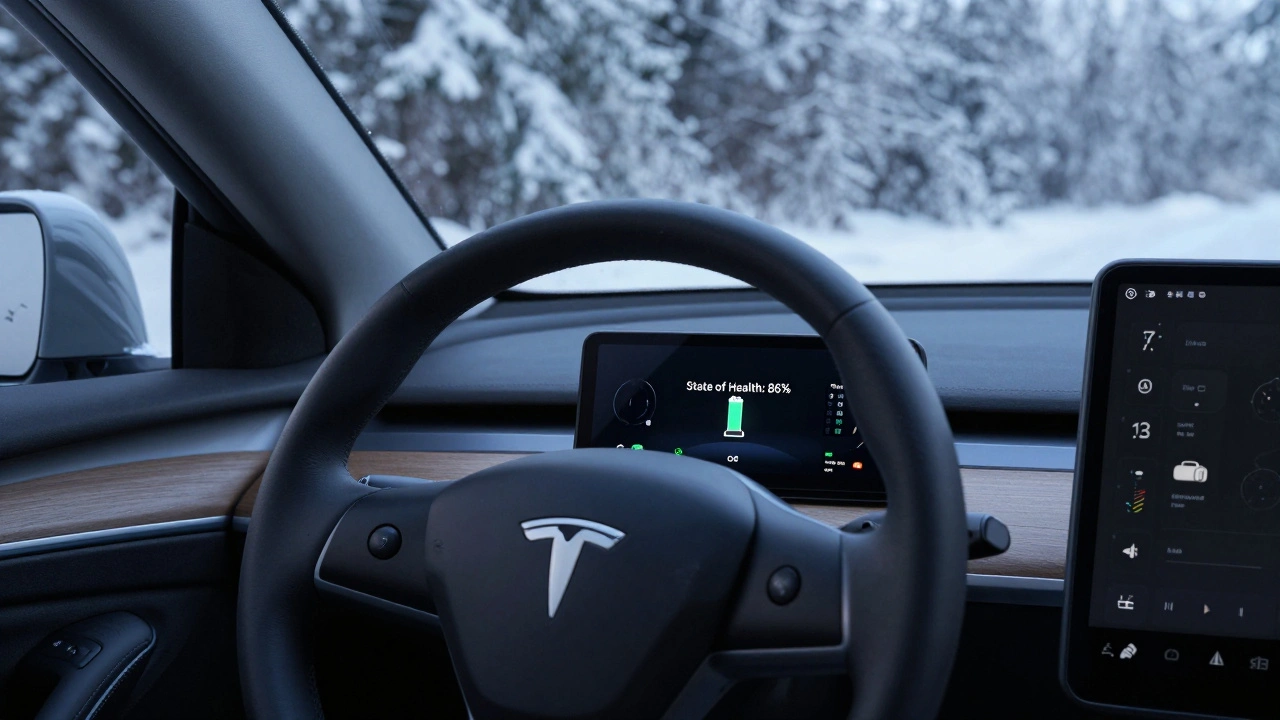Every minute a commercial truck sits idle, it costs money. Every wrong turn, every harsh brake, every unexplained stop-each adds up. For fleets managing 10 vehicles or 1,000, the difference between barely breaking even and turning a profit often comes down to one thing: data. That’s where telematics comes in.
What Telematics Actually Does for Your Fleet
Telematics isn’t just GPS tracking. It’s a system that collects real-time data from vehicles and sends it to a central platform. Sensors monitor engine diagnostics, speed, idling time, location, fuel usage, driver behavior, and even door openings. This data gets turned into actionable insights-no guesswork, no assumptions.
Think of it like a fitness tracker for your fleet. If your driver hits the brakes too hard five times in one route, the system flags it. If a van idles for 45 minutes at a delivery stop when it should be 10, you know. If a truck’s engine code shows a failing oxygen sensor before it breaks down, you fix it before the job gets canceled.
Modern telematics systems work with both new and older trucks. You don’t need to replace your entire fleet. A simple OBD-II plug-in device can turn any vehicle from 2005 or newer into a data source. Installation takes less than 15 minutes. No wiring. No mechanics needed.
How Data Cuts Fuel Costs by Up to 20%
Fuel is the biggest line item for most fleets. And it’s not just about how much you buy-it’s about how you drive.
A 2024 study by the American Transportation Research Institute found that fleets using telematics reduced fuel consumption by an average of 18%. How? Three ways:
- Idling reduction: Drivers who idle more than 10 minutes per shift waste 20% more fuel. Telematics alerts managers when idling exceeds thresholds. One logistics company in Ohio cut idling by 62% in six months-saving $14,000 monthly on diesel alone.
- Route optimization: Telematics platforms suggest the fastest, most fuel-efficient routes based on traffic, road conditions, and delivery windows. One delivery fleet in Texas saved 1,200 miles per week just by switching from manual routing to algorithm-driven planning.
- Aggressive driving correction: Hard acceleration uses 30% more fuel than smooth starts. Telematics tracks acceleration, braking, and cornering. When drivers see their scores improve, behavior changes. One regional hauler reported a 22% drop in fuel spend after introducing driver scorecards.
These aren’t hypotheticals. They’re real numbers from fleets using platforms like Geotab, Samsara, and Fleetio.
Preventing Breakdowns Before They Happen
Unplanned breakdowns cost fleets an average of $1,800 per incident-plus lost time, missed deliveries, and customer frustration.
Telematics pulls live engine data: RPM, coolant temperature, oil pressure, exhaust gas recirculation (EGR) status, fault codes. When a code pops up-say, P0420 for a failing catalytic converter-you get an alert before the engine light even comes on.
One small fleet in North Carolina had three major breakdowns in three months. After installing telematics, they caught a failing transmission sensor three weeks before failure. The repair cost $800. The breakdown cost? $5,200 in lost revenue and rental trucks.
Preventive maintenance becomes predictable. Instead of changing oil every 3,000 miles regardless of use, you change it when the system says the oil is degraded. That saves money and reduces waste.

Driver Behavior: The Hidden Profit Center
Drivers aren’t just operators-they’re cost centers or profit centers. And their behavior is measurable.
Telematics tracks:
- Speeding incidents
- Harsh braking (over 0.3g)
- Rapid acceleration (0-60 in under 5 seconds)
- Seatbelt usage
- Hours behind the wheel (HOS compliance)
One company in Georgia reduced accidents by 41% in nine months after implementing driver scorecards. They didn’t punish drivers-they showed them the data. One driver went from 12 harsh braking events per week to 2. His fuel efficiency jumped 15%. He got a bonus.
Insurance companies notice. Progressive and Travelers now offer discounts of up to 20% for fleets with telematics and clean driving records. That’s not a perk-it’s a direct reduction in your monthly premium.
Real-Time Visibility and Customer Trust
Customers don’t care about your maintenance schedule. They care about when their package arrives.
Telematics gives you live ETAs. You can send automated updates: "Your delivery is 15 minutes away," or "We’re delayed due to traffic-we’ll notify you if it changes." That reduces calls to your office by 60% or more.
One food delivery fleet in Atlanta used real-time tracking to cut customer complaints by 78%. Why? Because customers could see their driver’s location on a map. Transparency builds trust. And trust means repeat business.
It also helps with proof of delivery. Some systems use geofencing-when a vehicle enters a delivery zone, it automatically logs the time and location. No more signatures lost in the rain, no more "I never got it" disputes.

What to Look for in a Telematics System
Not all systems are built the same. Here’s what actually matters:
- Real-time alerts: Can you get a text or email when a vehicle leaves a zone after hours? When idling exceeds 15 minutes? When a door opens unexpectedly?
- Integration: Does it connect to your dispatch software, payroll system, or accounting platform? If you’re still manually entering data, you’re wasting time.
- Reporting: Can you generate a weekly fuel efficiency report? A driver behavior summary? A maintenance cost breakdown?
- Support: Do they offer 24/7 help? Or do you get a voicemail when your truck stops sending data at 2 a.m.?
Most systems cost between $20 and $40 per vehicle per month. That includes hardware, software, and cloud storage. For a 10-vehicle fleet, that’s under $500 a month. Compare that to the $1,200 you save weekly on fuel and repairs.
Common Mistakes Fleets Make
Telematics isn’t magic. It’s a tool. And like any tool, it can be misused.
- Buying the cheapest system: Low-cost systems often lack real-time alerts, poor customer support, or outdated hardware. You’ll pay more in lost time and missed opportunities.
- Not training drivers: If drivers think it’s a spy tool, they’ll find ways around it. Explain how it helps them-less stress, fewer tickets, better pay.
- Ignoring the data: Installing a system and never checking reports is like buying a scale and never weighing yourself. The data is useless if you don’t act on it.
- Trying to do everything at once: Start with fuel savings. Then move to maintenance. Then driver behavior. Don’t overwhelm your team.
Where Telematics Is Headed
By 2027, over 80% of commercial fleets in the U.S. will use telematics. The next wave includes:
- AI predicting maintenance needs before sensors even detect issues
- Integration with electric vehicle charging networks to optimize route and charge timing
- Automatic compliance reporting for ELD (Electronic Logging Device) rules
- Weather and traffic AI adjusting routes in real time during storms or road closures
Those who wait for "perfect" tech will fall behind. The best time to start was yesterday. The second-best time is now.
Is telematics only for large fleets?
No. Telematics works for any fleet with two or more vehicles. Even a small 3-truck landscaping company can save $1,000 a month on fuel and repairs. The cost per vehicle drops as your fleet grows, but the benefits start immediately.
Do I need a smartphone or special app to use telematics?
No. Telematics systems work through web dashboards and automated alerts. You can view reports on any computer or tablet. Most platforms also have mobile apps for drivers to check their scores or receive dispatch updates, but they’re optional.
Can telematics help with insurance discounts?
Yes. Many insurers, including Progressive, Travelers, and Nationwide, offer fleet discounts of 10-20% for companies using telematics. You’ll need to share your safety data with them, but the savings usually pay for the system in under three months.
How long does it take to see results from telematics?
Most fleets see measurable savings within 30 days. Fuel use drops fast. Idling decreases in weeks. Driver behavior improves once scores are shared. Full ROI-covering hardware, software, and training-typically happens in 4 to 6 months.
Is telematics data secure?
Yes. Reputable providers use bank-grade encryption, two-factor authentication, and regular security audits. Data is stored in U.S.-based servers. You control who sees what-drivers see only their own scores, managers see fleet-wide reports. Privacy policies are clear and compliant with federal regulations.






Aryan Jain
November 23, 2025 AT 08:03They say telematics saves money but what they don't tell you is who's really watching your every move? That device in your truck? It's not just tracking fuel-it's building a profile on you. Your heartbeat when you brake. Your silence when you're tired. They're learning your rhythm so they can predict when you'll crack. And then what? You're replaced by a robot that doesn't need sleep or a soul.
Nalini Venugopal
November 23, 2025 AT 20:31Wait, so you're telling me I can stop getting yelled at for speeding if I just install a gadget? Sign me up. Also, can someone explain why everyone keeps saying 'telematics' like it's a magic spell? It's just GPS + sensors. Why does it need a fancy name? 😅
Diwakar Pandey
November 24, 2025 AT 03:01I’ve had a system like this in my 3-truck fleet for 18 months. The biggest win? Not the fuel savings-it’s the peace of mind. My driver who used to rage-drive? He’s now our most consistent performer. No yelling. No fines. Just data showing him he’s better than he thought. Sometimes the tool doesn’t change the person-it just helps them see themselves clearly.
Geet Ramchandani
November 25, 2025 AT 14:59Let’s be real-this whole telematics thing is just corporate surveillance dressed up as ‘efficiency.’ They don’t care about your fuel costs. They care about controlling you. Every harsh brake, every idle minute, every second you spend not working-now it’s a metric. Soon they’ll track your bathroom breaks. Next thing you know, your ‘driver score’ determines if you get to eat lunch. This isn’t innovation-it’s dehumanization with a dashboard.
Pooja Kalra
November 26, 2025 AT 09:50Is it progress if the machine knows you better than you know yourself? We trade autonomy for optimization. We call it ‘efficiency’-but what we’re really doing is turning human beings into variables in a spreadsheet. The truck doesn’t feel fatigue. The algorithm doesn’t care if you had a bad night. We are becoming appendages to our own tools.
Sumit SM
November 26, 2025 AT 12:59Look-I’m not against tech-but why do people keep saying ‘telematics’ like it’s a religion? It’s just data. Data doesn’t care. Data doesn’t judge. It just is. The problem isn’t the system-it’s the people who use it to punish instead of coach. If your manager sees a 12-brake week and says ‘you’re fired,’ that’s not telematics failing-that’s leadership failing. Fix the manager, not the machine.
Jen Deschambeault
November 28, 2025 AT 08:59I run a small delivery team in Vancouver and this changed everything. We went from 3 late deliveries a week to 1 every 2 weeks. Customers started leaving 5-star reviews just because they could see their driver on a map. One lady even sent us cookies. I’m not joking. Transparency builds trust. And trust? That’s worth more than any fuel savings.
Kayla Ellsworth
November 28, 2025 AT 22:08So you're telling me the solution to our climate crisis is... more data? We're not saving the planet by tracking how fast someone accelerates. We're just making the corporate overlords slightly more efficient while the rest of us get micromanaged into oblivion. Also, ‘$14,000 monthly savings’? Sure. And I have a bridge to sell you.
Soham Dhruv
November 30, 2025 AT 07:57my buddy installed one on his 2007 ford and now he gets texts when he idles too long. he says it’s weird at first but now he’s like ‘oh cool i saved 2 bucks today’ lol. also his insurance went down 15%. no cap. the hardware is like a usb stick you plug in. 10 mins. done. stop overthinking it. it’s just a tool. use it right.
Bob Buthune
December 1, 2025 AT 09:07I used to think this was just another corporate scam... until my dad’s truck broke down on the highway. He was 72. Alone. No signal. I didn’t know until 3 hours later. Then we installed telematics. Now I get an alert if he stops moving for more than 10 minutes. Last week, it pinged at 3 a.m. He’d fallen asleep at the wheel. I called 911. They got him. He’s fine. This isn’t about fuel or profits. It’s about keeping people alive. And I’ll never look at this tech the same way again.
Jane San Miguel
December 1, 2025 AT 19:53While the anecdotal evidence presented is compelling, the statistical generalizations lack rigorous methodological grounding. The cited ‘20% fuel reduction’ is drawn from non-peer-reviewed industry white papers, and the sample sizes for ‘real-world’ case studies remain unverified. Furthermore, the conflation of correlation with causation-particularly regarding driver behavior-is a classic logical fallacy. Until longitudinal, randomized control trials are published in peer-reviewed journals, this remains techno-optimist wishful thinking dressed in corporate jargon.